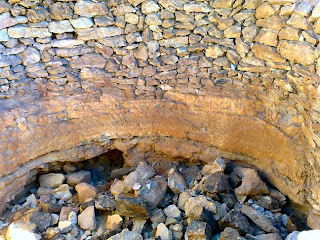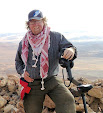How many men slept in an Ottoman army tent during the first world war? To find out, we did some experimental archaeology. Six plucky members of the team lay down within a tent ring, arranging themselves radially, feet central, heads out, in an attempt to establish what might have been practical given the size and shape of the tent. Six men, together with their arms, equipment and clothes would have been tight packed: our guess is that this would have been the number actually housed within the tents.

The detectorists went to examine the patch of land near what had been identified as an ancient well, eager with anticipation of finds dating back hundreds of years to support this.

However almost no metal artefacts were found whatsoever, with the exception of two modern (1950's) coins and a very small amount of iron scrap, making it very unlikely that this did in fact represent an ancient watering hole. Bit of a mystery!

Another intrepid group began a reconnaissance of the Hizaz railway south from Ma’an to Batn Al Ghul. This was aimed at identifying Great Arab Revolt period structures and features, (redoubts, trenches, breastworks and similar). The only way to detect these sites is to drive in the desert adjacent to the railway and to observe the landscape first hand. By the end of today we had discovered 5 new sites, all of which featured tent rings, defensive trenches, possible machine gun posts, and other characteristics all of which were worthy of serious investigation. Included in these sites we found the location of Gadia Al Hajj station which we had previously not been unable to find.

The intensity of this field work meant that after six hours we had only been able to cover 20km, leaving a further 40km on this stretch – who knows wonders what these may reveal!
For those interested in the use of metal detectors on this expedition, here’s a couple of pictures hastily taken of some of the 600 metal artefacts found during the first 7 days of our searching. The range and age of these reflect the ancient location of the WW1 sites and the pathways along which they lie alongside.


Finally we would like to express our sincere thanks to the Edom Hotel near to the astonishing new wonder of the world that is Petra for their kindness in allowing us to have internet access via the hotel in order to make and publish this blog. We are very grateful for their help.
























































